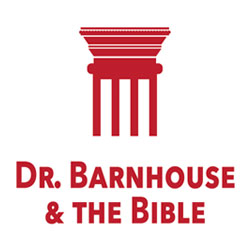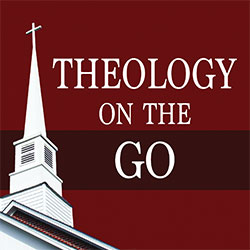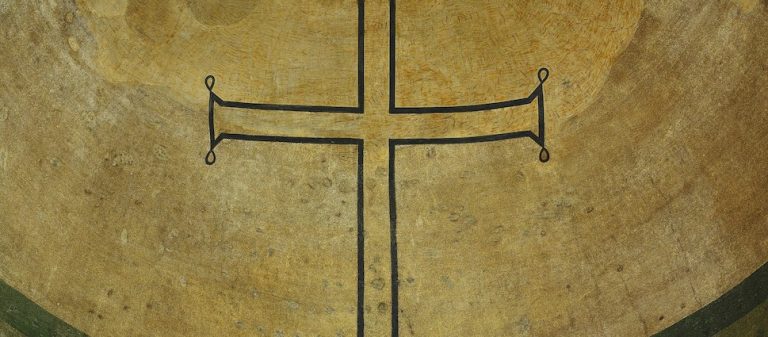The first five of the Thirty-Nine Articles of Religion explained the universal faith of the church. Article 6 begins the theological issues that divided the church at the time of the Reformation and deals with the source of Christian doctrine. It explains the concept of sola Scriptura, “Scripture alone.” As we have seen in previous articles, article 6 is not intended to stand-alone. The question of who decides what the Scripture teaches is answered in Article 20 and questions concerning church order in worship and administration come in article 34.
VI — Of the Sufficiency of the Holy Scriptures for Salvation
Holy Scripture containeth all things necessary to salvation: so that whatsoever is not read therein, nor may be proved thereby, is not to be required of any man, that it should be believed as an article of the Faith, or be thought requisite or necessary to salvation. In the name of the holy Scripture we do understand those Canonical Books of the Old and New Testament, of whose authority was never any doubt in the Church.
Of the Names and Number of the Canonical Books:
Genesis,
Exodus,
Leviticus,
Numbers,
Deuteronomy,
Joshua,
Judges,
Ruth,
The First Book of Samuel
, The Second Book of Samuel,
The First Book of Kings
, The Second Book of Kings
, The First Book of Chronicles,
The Second Book of Chronicles
, The First Book of Esdras,
The Second Book of Esdras
, The Book of Esther
, The Book of Job
, The Psalms,
The Proverbs,
Ecclesiastes or Preacher,
Cantica, or Songs of Solomon
, Four Prophets the greater, Twelve Prophets the less
And the other Books (as Hierome saith) the Church doth read for example of life and instruction of manners; but yet doth it not apply them to establish any doctrine; such are these following:
The Third Book of Esdras,
The Fourth Book of Esdras
, The Book of Tobias
, The Book of Judith
, The rest of the Book of Esther,
The Book of Wisdom, Jesus the Son of Sirach
, Baruch the Prophet,
The Song of the Three Children
, The Story of Susanna
, Of Bel and the Dragon,
The Prayer of Manasses
, The First Book of Maccabees
, The Second Book of Maccabees.
All the Books of the New Testament, as they are commonly received, we do receive, and account them Canonical.
The article’s first sentence is based on Thomas Cranmer’s 1553 original. The second, including the canonical list we read here, was added in 1563, probably based on the Confession of Würtemburg, although the same list of canonical v. apocryphal books also appears in Cranmer’s earlier Reformatio Legum, adding at the end, “This is the sum of Holy Scripture, in which we believe that all things which must be believed for salvation are fully and perfectly contained, so that if something is not read or contained in it, neither does it follow nor is it deduced from it, cannot be demanded of anyone that it should be believed as an article of faith.”
Scripture is identified both in article 6 and the Reformatio Legum as the principium cognoscendi, “the principle of knowing” of all theology, and is described regarding its authority, clarity, and sufficiency of all matters of faith and morality. The view of the article evolved from the debate between the reformers and late medieval theology over the relation of Scripture and tradition. The medieval, confirmed by the Council of Trent, viewing Scripture and tradition as coequal norms. The reformers viewing Scripture as the absolute and therefore prior norm, but allowing tradition a derivative and subordinate secondary role in creedal and confessional statements (as Article 8 explains later). Robert Letham has written that the material of this article is adopted by Westminster Confession of Faith 1.6 and Westminster Confession of Faith 20.2a, on Christian liberty that insists that faith and practice are to based upon Scripture, not human teachings (The Westminster Assembly: Reading Its Theology in Historical Context, p. 72).
The doctrine of Scripture is a misunderstood teaching among Anglicans today. Some have suggested that the 39 Articles do not teach sola but prima Scriptura, rejecting Scripture as the prior norm of tradition or of human experience. The irony being that this article was written specifically to reject any understanding of church tradition or individual human experience as equal norms to Scripture.
Where would an Anglican turn to learn more? The Two Books of Homilies (online or print) are traditionally considered part of Anglicanism’s constitutive documents, as Articles 11 and 35 underline. They have always been understood as a source of doctrine for Anglicans although they are little known today. The Homilies were a brilliant evangelism strategy in an era when the gospel was little known outside of cities and towns that were centers of trade with the continent of Europe. For the thousands of parishes that made up the bulk of the Church of England the quality of biblical preaching was very poor to non-existent. They were intended as an instrument of gospel mission, to raise the standard of preaching by offering model sermons covering critical doctrines of the gospel and to provide pastoral application that was to be read (particularly by officers or lay ministers who lacked a license to preach or teach).
Homily one of The Homilies begins as the later Westminster Confession of Faith begins: “A Fruitful Exhortation to the Reading and Knowledge of Holy Scriptures.” Written by Thomas Cranmer it gives Anglicans the wider context of article 6, 7 on the Scripture, and articles 8, 20, 21 and 34 on the relation of the authority of the church to Scripture. When read as a narrative whole, the Reformation principle of sola Scriptura shines through every paragraph of the historical formularies.
Homily one is written in two parts. The first establishes the doctrine, and the second gives application. This colorful paragraph on the sufficiency of Scripture from part one is an example,
Therefore, forsaking the corrupt judgment of fleshly men, with care not for but their carcass, let us reverently hear and read Holy Scripture, which is the food of the soul. Let us diligently search for the well of life in the books of the New and Old Testament, and not run to the stinking puddles of men’s traditions, devised by men’s imagination, for our justification and salvation. For in Holy Scripture is fully contained what we ought to do, and what to eschew, what to believe, what to love, and what to look for at God’s hands at length. In these books we shall find the Father from whom, the Son by whom and the Holy Ghost in whom, all things have their being and keeping up; and these three Persons to be but one God, and one substance. In these books we may learn to know ourselves, how vile and miserable we be; and also to know God, how good he is of himself, and how he makes us and all creatures partakers of his goodness. We may learn also in these books to know God’s will and pleasure, as much as, for this present time, is convenient for us to know.
Homily one is one of the most extensive expositions of the doctrine of sola Scriptura found in any of the official Anglican documents of the Reformation era.
For previous articles in this series, see:
- Introduction
- One God in Trinity, Trinity in Unity (Art. 1)
- The Incarnation and Atonement (Art. 2)
- The Work of Christ (Arts. 3-4)
- The Holy Spirit (Art. 5)

























